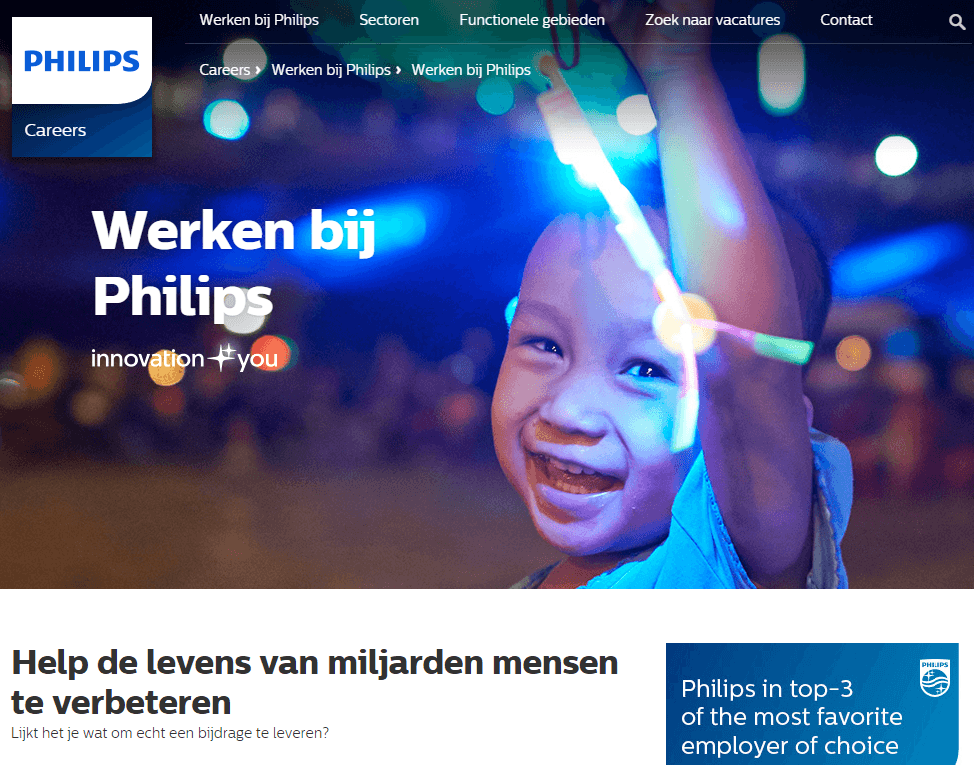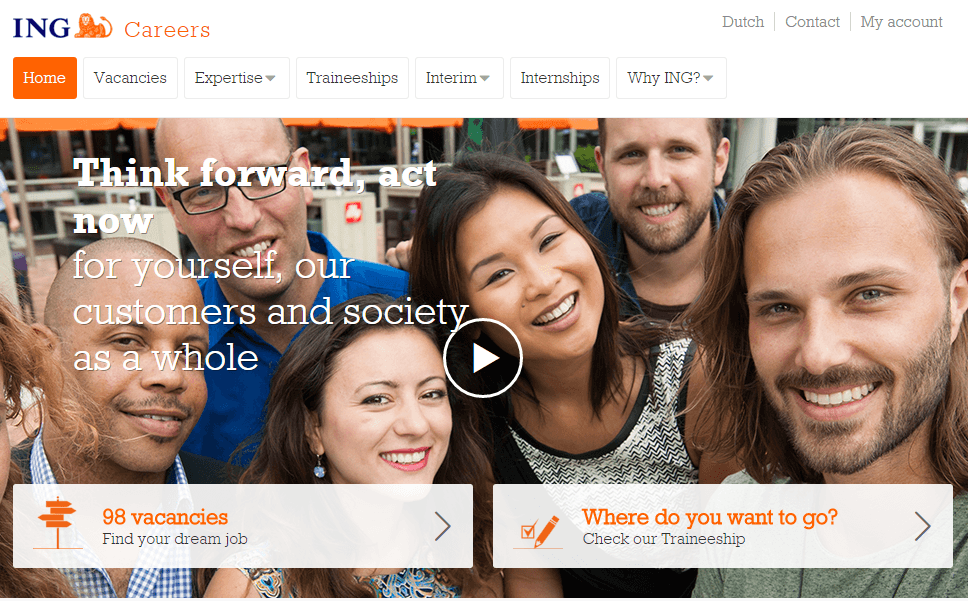*Online Marketing
8 rules for recruitment through social media

The economy is picking up again, and you can see that reflected in the job market. As a result, you also see more activities in the field of recruitment and selection. It’s no surprise that these activities are mainly taking place online. For example, LinkedIn earns a significant portion of its revenue by selling premium subscriptions to recruiters, and large brands advertise eagerly on this platform. Recruiters also use other social media platforms frequently, although there is a lot less activity after LinkedIn. However, we still see relatively few small to medium-sized enterprises actively recruiting via social media, and there is no mention of selection at all. Why is that? How do large companies use social media for recruitment and selection? We will answer these questions and share 8 rules to give your future recruitment efforts a flying start.
The age-old cliché applies here as well: “it used to be so much easier.” You placed an advertisement or paid a recruiter, and you didn’t have many more options. Nowadays, there are dozens of channels for recruiting and selecting people. Compared to the past, it is certainly less straightforward. Online marketing has become the foundation of recruitment and selection, with a lot of emphasis on social media.
Recruitment and selection have changed
Recruitment and selection have also changed in another way: you no longer have the luxury of choice. Unless you’re Google or Facebook, people think twice. For example, investment bank Goldman Sachs is forced to make changes to “retain more junior employees at the analyst and associate level” [1]. From this, we can conclude that money alone, even if it’s $500,000 (which you get after years of hard work), is simply not enough anymore! In the Netherlands, large companies also pay a great deal of attention to recruiting top talents. Companies like Philips, Shell, and ING invest a lot of time and money in employer branding and recruiting candidates through social media.
It’s inherent in the term “top talent” that there is more demand than supply. Therefore, the party that manages to capture the attention of the coveted group wins. But how do you do that? The following rules will help you in the right direction.
Recruitment and selection via social media: the rules
1) You need to have a compelling story
The vast majority of advertisements talk about challenging environments, opportunities for growth, competitive salaries, and so on. Did your eyes glaze over as well? Compare that to companies like Philips, which asks if you want to improve people’s lives and promotes diversity, or ING, which wants to know where you’re heading, and Shell, which mainly focuses on making an impact. These companies simply have their story well-organized, a story that aligns with their organization and the people they want to attract. What story are you telling to your future employees? If this is still a bit unclear, consider reading our blog: “7 Reasons Why Your Positioning Is More Important Than Ever.”
2) You think long-term
Nobody spends just a day on social media. If you want to utilize social media for recruitment and selection, you must be willing to think long-term. This means adjusting your goals accordingly. Building a solid presence on social media can take months, so be prepared for that. If you have some budget to accelerate things, consider investing it in creating good content rather than advertising.
3) Your strategy is clear
How will you get the attention of your target audience? Unfortunately, many companies mistakenly believe that social media is the answer. Presence alone does not equal attention. How will you ensure that people take the time to read what you have to say? Need an example? Read our blog about Unilever’s brand strategy and positioning.
4) You have a specific but, above all, genuine message
You know them, the buzzwords that practically every advertisement contains: challenging, market-based compensation, flexible, and many others. My eyes, and practically everyone’s, just glide over this nonsense. We all know whether a message is genuine or if the company means what it says. So, make sure your message is real and sincere before you go through all the trouble of catching the attention of your ideal colleague.
5) Use multiple platforms
Just placing an advertisement and receiving letters is a thing of the past. The same goes for assuming that people are actively looking for you. There are dozens of companies eager to connect with the right people, and you need to ensure that you are in the right place. Is your recruitment target audience on Facebook? Then make sure you’re there too. For example, research by BCG in collaboration with a German university on the recruitment of banks found that 78% of the target audience sought career information on Facebook, but only 9% succeeded! A missed opportunity for the banks. What have you missed out on?
6) Make it human
Recommendations from friends and family and ‘networking’ are the most important ways to find a new job. Real stories from your employees are much more effective than the contrived cases presented by marketing. Moreover, such a story is shared many times more, increasing your reach.
7) Show, don’t tell
It’s a golden rule for writers and should be for recruitment as well. Show what groundbreaking project you’ve just completed and the exceptional results it has produced. This is much more powerful than the standard: “We are an innovative company with a good reputation among various market players.”
8) The eye wants something too
A clumsy and poorly crafted message is immediately noticeable. If you want to attract professionals, do it professionally. Ensure that your message or content looks inspiring, distinctive, and error-free. It sounds logical, but it often happens that messages are posted haphazardly across different channels “because it had to be done.” In reality, this does more harm than good to your employer brand.
In summary, recruitment and selection through social media require a consistent and well-thought-out approach. Many companies take shortcuts and miss the opportunity to attract a new generation of colleagues. Recruitment and selection are the foundation of competitiveness and differentiation, and these 8 rules will help you get the most out of your recruitment and selection through social media.


